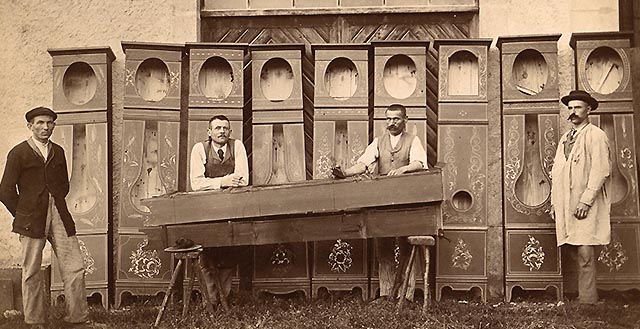
Reliable and Reasonably Priced – Clocks from Franche-Comté
The production of clocks with wrought iron movements in the French Jura Mountains dates back to about 1700. Initially crafted by independent clock-makers, production of these clocks began to evolve on a larger scale sometime around 1820, numbering as many as 100,000 clocks in the best years.
The sturdy, weight-driven pendulum clocks were popular, especially with the rural population. The intensely loud stroke of the bell was ideal on farms. Cabinetmakers would provide the appropriate cases made of painted pine and often designed with a large aperture for viewing the highly ornate pendulum.
The clocks were chiefly made in Franche-Comté, which explains the origin of the name, “Comtoise clock”. Starting around 1820, spring-driven movements were made as well. Called “Morez clocks”, they are named after their centre of production. Because of their oval-shaped frame, they are also referred to as “oeil de boeuf” (literally: “eye of the steer”).
A Comtoise clock used to cost 25 to 30 French francs. This was about three times as expensive as a Black Forest clock.